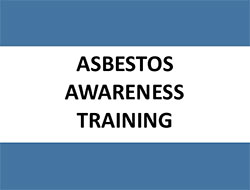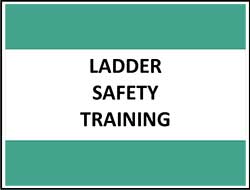Environmental Regulations
In general, every employer is responsibility to provide a safe area for employees and guests. This includes many environmental issues, such as air pollution, hazardous waste disposal, intact underground storage tanks, use of chemicals or hazardous substances (e.g., pesticides, cleaning agents), food service and waste, quality drinking water, mold, and radon.
EPA has published the Pollution Prevention National Program Guidance for FY 2020-2021. The National Program Guidances (NPG) set forth the strategies and actions the EPA and its state and tribal partners will undertake to protect human health and the environment. This includes the following:
Asbestos
Asbestos regulations fall under two different federal and state agencies: the Environmental Protection Agency (EPA) for overall compliance and under the Occupational Safety and Health Administration (OSHA) for employee safety. EPA regulates asbestos in school buildings, public and commercial buildings.
- ASHARA. The Asbestos School Hazard Abatement Reauthorization Act of 1990 contains several instructions for schools to follow if they still have friable asbestos in the school (see ASHARA_of_1990). This includes information about inspections, evaluations, and compliance monitoring under TSCA).
- NESHAP. National Emission Standards for Hazardous Air Pollutants defines the national work place regulations for asbestos during demolitions and renovations of all structures, installations, and buildings. (see CFR-2011 - NESHAP). CFR-2011-title40-vol8-part61-subpartM
- OSHA Asbestos Regulation. OSHA's regulations to control work conditions and worker safety when handling asbestos in the workplace. (see CFR-2011 - OSHA Asbestos) CFR-2011-title29-vol6-sec1910-1001

CLICK HERE to access the Asbestos Awareness Training Module
Hazardous Waste
Federal EPA and state regulations follow a “cradle-to-grave” approach across the hazardous waste management system in the United States. The Hazardous Waste Program defines specific requirements for generators, recycling, transportation, and state authorizations. The regulation also categorizes wastes into specific types, including academic and laboratory waste, cathode ray tubes (CRTs), household hazardous waste, solvent-contaminated wipes, special wastes, universal wastes, and used oil.
OSHA
The Occupational Health and Safety Act of 1970 (OSHA) creates standards and methods for employer to use to protect employees from workplace hazards. Many of the standards began with a General Duty Clause, but are now refined and updated annually to prevent physical harm or death to all employees.
Virginia OSHA may conduct “unprogrammed” inspections and has the ability to arrive without advance warning. An employer has the right under the fourth amendment of the US Constitution to refuse entry without a warranty; however, all diocesan parishes and schools are asked to contact the Office of Risk Management whenever an OSHA/VOSHA Compliance Officer arrives at one of our locations.
Generally OSHA requires every employer to provide written guidelines and safety training for employees working in any hazardous condition. The following documents are templates that can be used at any location:
Ladder Safety

CLICK HERE to access the Ladder Safety Training Module
Ladder Safety Program Template
Policy template that can be downloaded and personalized for individual locations. The Ladder Safety Self-Inspection Checklist can be found in the Ladder Safety Program Template.
Click HERE to find an Overview of OSHA Requirements.
Click HERE for a link to the Virginia OSHA Programs.
Click HERE for a link to the Federal OSHA website.